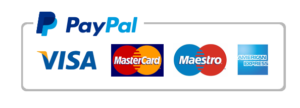Community General Hospital Case Study
Creating a Quality and Safety Dashboard
It’s your first week on the job—your dream job, actually. You are thrilled to be working as the Assistant Director of Clinical Quality Improvement at Community General Hospital (CGH). For your first project, Dr. Schenk, your boss and mentor, asks you to create a quality and safety dashboard for her monthly report to the Board. You are eager to show off the skills you’ve gained from your master’s program. If this goes well, you might be the one presenting to the Board in a few months.
Dr. Schenk gives you tips on where to start. She shows you some previous dashboards and says that they were not particularly helpful to the Board members, who really want information that allows comparisons to other hospitals.
You wonder aloud whether there are national standards that would be useful, because you have read in the literature that active hospital board reviews of quality and safety using dashboards are associated with better performance (Denham, 2006; Kroch et al., 2006; Jha & Epstein, 2010).
Dr. Schenk agrees, “Yes, you should search the relevant sites for current information. Look at the Joint Commission, CMS Hospital Compare, and the Institute for Healthcare Improvement.” She continues, “Of course, we should have measures that are relevant to our quality and safety issues here at CGH. We need to highlight our current QI projects to show that we are making improvements, but we also want to identify some of the gaps where we could do better. Right now, we are working on reducing surgical site infections, reducing readmissions, and reducing wait times in the Emergency Department.”
Dr. Schenk outlines a few additional instructions:
· Try to kill two birds with one stone—start with measures that the hospital is required to report.
· Present clear metrics that reflect the current status of the hospital.
· Don’t get too bogged down in detail because it will only overwhelm the Board.
Dr. Schenk then leaves you to your research. You look at the websites she has recommended for current reporting requirements and measures.
Centers for Medicare and Medicaid Services. (n.d.). Hospital Compare. Retrieved December 5, 2019, from https://www.medicare.gov/hospitalcompare/search.html
Joint Commission. (2019). Performance measurement. Retrieved from https://www.jointcommission.org/performance_measurement.aspx
Institute for Healthcare Improvement. (n.d.). Measures. Retrieved from http://www.ihi.org/resources/Pages/Measures/default.aspx
The websites include so many measures, too many for one dashboard. Clearly you will need to focus the CGH Quality and Safety Dashboard on a subset or aggregation of the many possible measures that you could include.
Next, you remember Dr. Schenk’s advice to keep it relevant. You think about what you know about the hospital. Not everything that you found in your research would be relevant. On the other hand, you didn’t find measures for some things that are relevant for CGH. This hospital is such a vital part of the community. How do you capture that on a dashboard? People love working here. The turnover rate for nurses is low. Physicians move here to practice medicine because this is such a great hospital, in a family-oriented community. And the best part, in your opinion, is that physicians and staff are truly engaged in making things better—probably because everyone from the cleaning staff to the CEO are required to take the CGH Performance Improvement course. It’s hard to put numbers on those indicators.
Some other facts are easier to put numbers on. CGH is a nonprofit, 200-bed, non-teaching hospital. In 2019, CGH recorded the following data:
Number of admissions: 11,986
Number of patients over the age of 65: 2,637
Percent of patients over the age of 65: 22%
Percent of patients who identify as a race other than White: 38%
Percent of patients who are female: 59%
Mean length of stay for all patients (days): 3
Percent of patients readmitted within 30 days: 1.4
After completing your research, you now have enough details to select measures and draft the CGH Quality and Safety Dashboard.
References
Denham, C. R. (2006). Leaders need dashboards, dashboards need leaders. Journal of Patient Safety, 2(1), 45–53.
Jha, A., & Epstein, A. (2010). Hospital governance and the quality of care. Health Affairs, 29(1), 182–187. doi:10.1377/hlthaff.2009.0297
Kroch, E., Vaughn, T., Koepke, M., Roman, S., Foster, D., Sinha, S., & Levey, S. (2006). Hospital boards and quality dashboards. Journal of Patient Safety, 2(1), 10–19.


